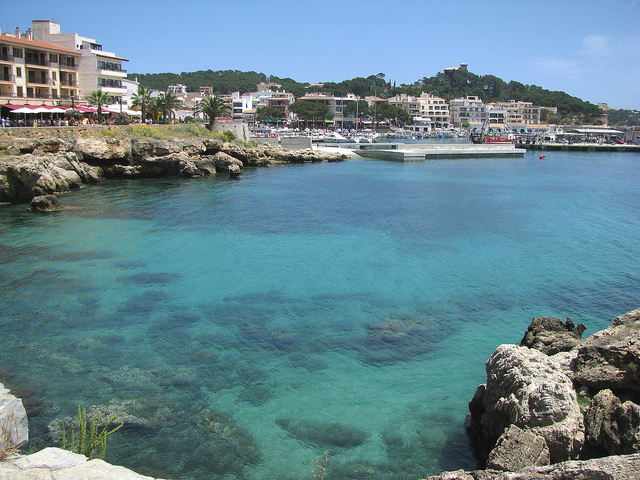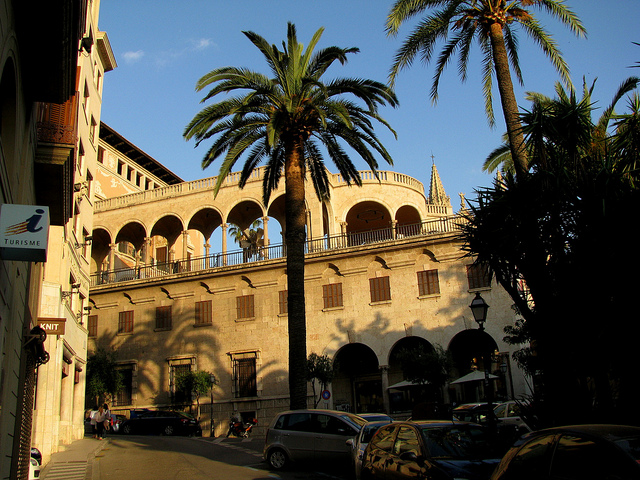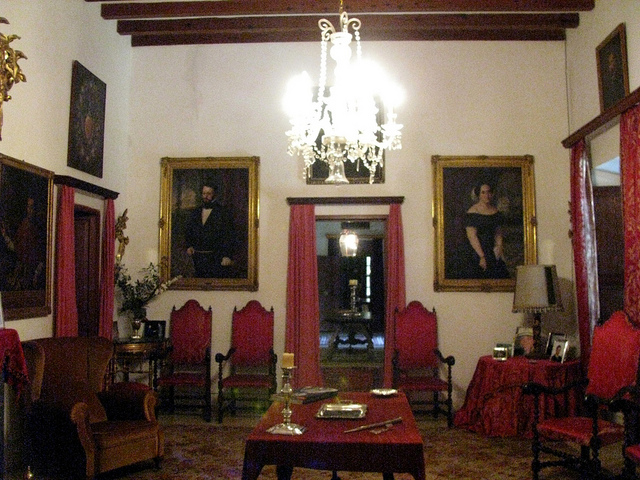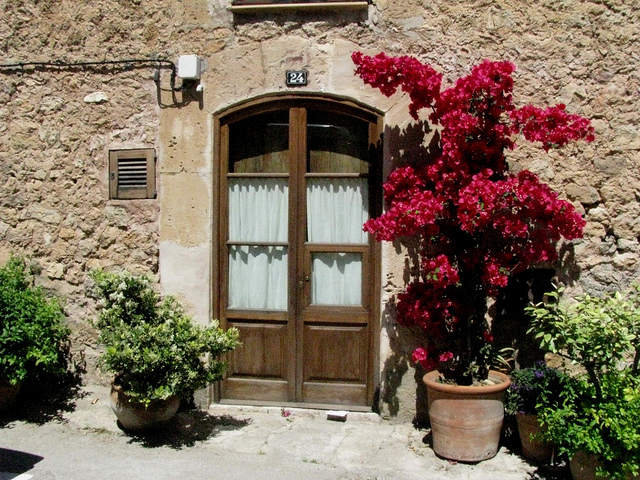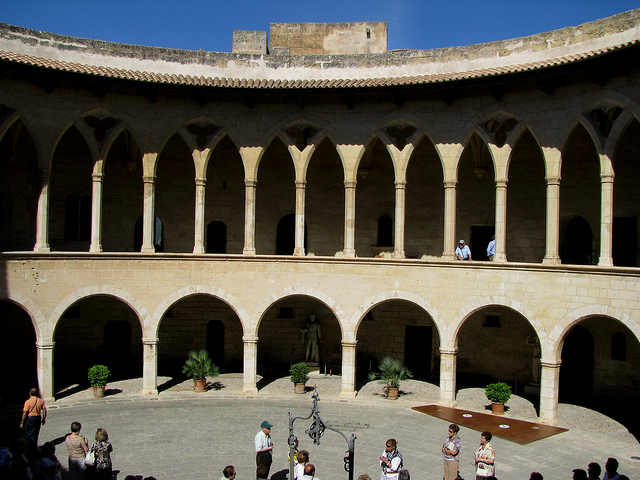On my last full day in Mallorca my plan was to explore the eastern part of the island. I had spent the vast majority of my time in the north of Mallorca, where the dramatic Serra de Tramuntana mountain range had held an almost magical spell on me. Today my destinations were on the eastern part of the island.
Around 10 am I left Port d’Alcudia and started driving south. The first big attraction along my route was the Parc Natural de s’Albufera, a large protected wetland that features many kilometers of walkways that allow visitors to view the fauna and flora of this nature area. More than 200 species of wild birds can be admired up close at this conservation area. Close by is the town of C’an Picafort, a tourist town located in the centre of the Bay of Alcudia which is particularly popular with tourists from Germany. From here the road turned inland through flattish countryside with occasional rolling hills.

The fortified Sanctuary of Sant Salvador in Mallorca
My first stop was at the hilltop town of Arta whose name derives from the Arabic word for “garden”. I drove through the narrow streets of the town to a parking lot below the fortification, parked my car and hiked up to the top of the hill which is crowned by the impressive Sanctuary of Sant Salvador.

Altar in the church of the Sanctuary of Sant Salvador
The church dates from the 1300s and draws visitors from all across Mallorca. The fortification walls were added in the 16h century to protect the church against invading pirates. The view from the top of the mountain across the wide expansive valley is fabulous and towards the south side you can survey the town of Arta which sprawls at the foot of the hill.

Stone cross below the sanctuary in Arta
A series of steps down from the mountain, actually a Way of the Cross, is the town’s parish church which dates back to 1573. Arta is not a primary tourist destination, but definitely worth a stop on a tour of the island. From here I continued my drive eastwards on Highway C712 to the seafront town of Cala Rajada, the main coastal development on this part of the island.

The impressive Cathedral of Arta
I arrived in Son Moll, a part of Cala Rajada that offers a beautiful cove with a sandy beach that is enveloped by turquoise and deep blue waters. Most of the tourists in this town hail from Germany, and I was watching a crowd of German tourists in a public dance lesson right next to the beach. Cala Rajada used to be a fishing village until the onset of mass tourism in the 1960s.

The beautiful turquoise beach of Son Moll in Cala Rajada
The entire waterfront is accessible via a paved walkway that is lined by a series of cafes and restaurants with outdoor patios. It was now getting close to noon time and my stomach was starting to growl. One restaurant caught my attention with a sign up front saying “Hier nix Kotelett & Sauerkraut, hier kocht Pedro”. (Translation: “No pork chops and sauerkraut here, Pedro is cooking here.”). I had to laugh out loud at this obviously humorous reference to the many restaurants that cater specifically to German taste buds.

Great view over the harbour of Cala Rajada while eating my pizza
I found a nice little pizzeria and plunked myself down on the outdoor patio with a perfect view of the harbour of Cala Rajada. Instead of fishing boats, the port today is home to expensive yachts and cruisers. I enjoyed the sun as I savoured my tomato and goat cheese pizza. As I took in the scenic view of Cala Rajada I thought to myself that it does not get much better than this.

King Juan Carlos regulars stay in the mansion on top of the hill
When I was finished with lunch I asked the owner (who also hailed from Germany) about the big villa on the hill opposite harbour. He explained that the entire hill and the villa are owned by the wealthy March family, owners of the Banca March, a financial institution founded in 1926 by Juan March who at one point was the 7th richest man in the world. The family often receives important guests, and once a year King Juan Carlos from Spain arrives here for a summer vacation, resulting in extensive security measures that block off the port of Cala Rajada.

The waterfront of Cala Rajada
